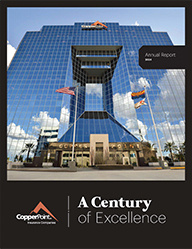Construction can be risky business. Construction sites are full of potential hazards that can impact the wellbeing of workers and make your construction insurance costs rise.
Builders turn to construction coverage, such as workers’ compensation, property and casualty, and construction liability insurance for protection from possible construction site dangers.
Many are turning to new wearable safety tools to keep workers safe and qualify for the best construction insurance. Here are some of the latest innovations available.
Smart head gear
Regular hard hats and helmets are an important part of a construction workers protective gear. They reduce injury from falling debris or falls, but they’re not helpful to protect the wearer from injuries caused when the neck rotates, which can lead to serious brain injuries.
New smart hard hats and helmets have 360-degree cameras and sensors to let the wearer know when there is a hazard inside a specific area. The sensors can communicate with managers to let them know the worker is in danger. Some smart hard hats and helmets also feature a halo light to provide another layer of safety for the wearer.
Smart hard hats and helmets are designed with a multi-directional impact protection system that allows the wearer to move just a little bit. This restricted movement help protect from rotational injuries that can cause serious damage to the brain.
Another kind of smart head gear is smart caps. These can help measure the alertness of the worker, which can reduce fatigue-related injuries and keep construction insurance costs down. They work by measuring brain waves and brain drift. If the worker is showing signs of getting sleepy or less alert, the smart cap vibrates and makes noise to get the attention of the wearer. It also sends an alert to the manager and the employee’s phone.
The Monash University Accident Research Center did a test study of the smart cap in a sleep lab setting. The study showed that the smart cap was 95% effective in identifying workers with dangerously low levels of alertness.
Another study followed 87 truck drivers for three months as the drivers spent 8,739 hours on the road over 520,000 miles. This study revealed that the smart cap was 93% effective. As a result of wearing the smart cap, there were zero fatigue-related incidents during this time.
This is good news for builders who want to reduce injuries and keep their crews safe while keeping their workers’ compensation, property and casualty and construction liability coverage expenses down.
Smart watches
Smart watches are another technology that can help make construction safer. They monitor the wearer’s heart, which can track their heart rhythms, the amount of oxygen in their blood and their heart rate. If any of these signs of health are off, the smart watch can call for help and alert the wearer’s emergency contacts.
There are many apps that work with smart watches, such as ones that count steps, send medical alerts about specific health conditions and sense if the wearer has fallen. Again, the smart watch can automatically call for assistance if the wearer has an emergency. Smart watches can track fatigue, too, which can reduce accidents and injuries on the construction site.
Also, because smart watches are hands free, they won’t distract the worker who is wearing them.
Powered and smart boots
Protective footwear is now smart, too. Powered boots are one kind of smart footwear that can detect if the worker is tired, has fallen or was hit by something. Special pressure sensors in these boots can detect a problem and send an alert for help with the GPS location of the worker thanks to a built-in RFID tracker. These powered boots are charged when the wearer moves, which means they won’t run out of charge at the wrong time.
Smart boots are another protective footwear option. Developed with the U.S. Army, these also contain sensors that can monitor the safety of workers and send for help, if needed.
Clip ons
Workers can also wear clip-on smart devices to help boost safety on the job. When a worker arrives for work, they can pick up this small wearable device and attach it to their clothing. Because it monitors who is using it and when, it can also automate employee attendance records.
Clip ons can identify a number of hazards, such as free falls and other accidents. They also have an emergency button the wearer can push to call for help if they become injured. In addition, managers can send an evacuation alarm to employees through clip ons, which can alert them to leave the job site in the event of an urgent situation.
Clip ons are made of durable materials, so they can hold up to the wear and tear at a construction zone. They also have rechargeable batteries, which make them sustainability friendly. They can be used on both small and large construction sites, which makes them a versatile way to enhance safety and manage construction insurance costs.
Vests
Smart vests offer another safety option for construction workers. They can be used to keep the wearer comfortable during extreme weather conditions. In the heat of summer, built-in icepacks and fans can keep the worker cool and reduce the risk of heat-related illness. In the colder months, battery-powered heaters can help keep the wearer safely warm and comfortable.
The vests can be geo-tagged, which means they can send an alert to the worker if they accidentally enter a hazardous area. The smart features in these vests can also slow down or stop equipment to prevent accidents, too, if the vest detects that the worker is at risk.
They can be equipped with gas-detection technology that can alert the worker if they are exposed to dangerous gas so they can take action right away and get to safety. In addition, the worker can pull a cord on the vest to call for help, if needed.
Exoskeletons and iron hands
While they are an expensive option, exoskeletons are another smart wearable device that can keep workers safe by providing extra strength or support to the bones and muscles, depending on the device. This can help prevent injury when workers are lifting or moving heavy objects.
Iron hands are similar, but they are designed to be worn under gloves to help strengthen the worker’s grip. This extra strength can help prevent injuries that occur when workers lose hold of tools or equipment. Iron hands are powered by a unit the worker wears in a backpack.
Augmented reality
Augmented reality technology can also help enhance safety at a construction site by overlaying digital elements on top of the actual construction setting. This might involve workers wearing smart glasses and safety glasses.
These cutting-edge tools can warn employees of potential hazards to avoid, show them how to use equipment properly and let them know where underground cables are so they can avoid them.
While traditional safety training is a critical part of a construction workers’ job preparation, state-of-the-art wearable devices add another layer of protection that can protect the wellbeing of workers and help control the costs of construction insurance premiums for builders by reducing risk.
Learn more about wearable devices for construction and other safety tips here, and explore CopperPoint’s construction solutions here.
Employers are responsible for providing a safe workplace for employees that is free of hazards that may cause death or injury. CopperPoint’s Loss Control Toolbox, which has a resource material library, learning management system and videos available 24/7, can help you do just that.
When you make the effort to follow create a safe workplace that is OSHA compliant, you’re doing the best thing possible for your employees—and your business.
The information provided in this blog is intended for general information purposes only is not a substitute for review of current applicable government regulations, industry standards, or other standards specific to your business and/or activities and should not be construed as legal advice or opinion.





